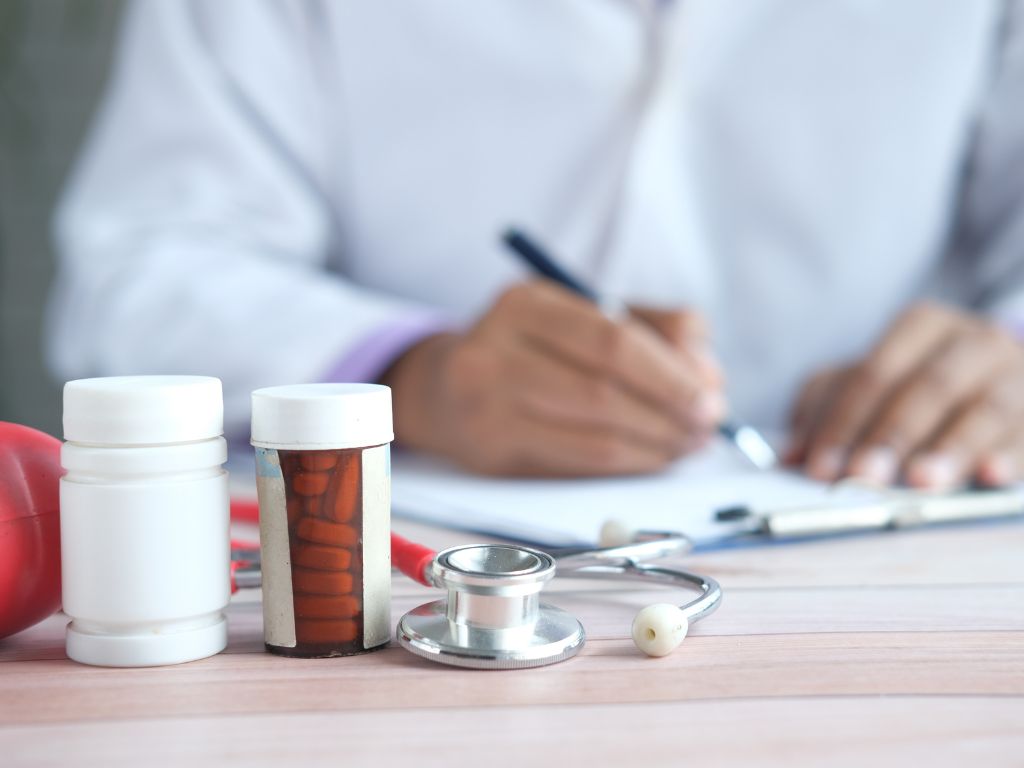What if I told you that nearly one in three men struggle with sexual dysfunction, yet most silently bear the burden? According to a foundational population-based review, around 31%1 of men experience some form of sexual dysfunction within their lifetime, spanning everything from diminished desire to painful intimacy.
This reality, so deeply personal yet surprisingly prevalent reveals a silent epidemic that goes far beyond physical symptoms. From disrupted relationships and eroded confidence to a profound dip in life satisfaction, sexual dysfunction impacts far more than bedroom performance, it reshapes lives. With this in mind, let’s explore the intricate web of causes, recognize the nuanced signs, and uncover effective treatments to restore both sexual health and emotional wellness.
What Is Male Sexual Dysfunction?
Male sexual dysfunction refers to a broad category of conditions that interfere with a man’s ability to achieve or maintain normal sexual activity. According to studies2 by Chen et al. (2019), it primarily includes erectile dysfunction, difficulties in completing sexual intercourse, and a loss of libido or sexual desire.
These issues can pop up on their own or together, and they can really mess with your quality of life and your intimate relationships. Since male sexual dysfunction often comes from a mix of physical, mental, and relationship factors, it's super important to see it as a complex condition for proper diagnosis and treatment.
Main Types of Male Sexual Dysfunction
1- Erectile Difficulties
Erectile dysfunction is the persistent inability to achieve or maintain an erection firm enough for intercourse. It can result from vascular, neurological, hormonal, or psychological factors. Research3 shows it is strongly linked with age, cardiovascular disease, and diabetes.
2- Premature Ejaculation
Premature ejaculation (PE) is one of the most prevalent male sexual disorders, affecting approximately 20–30%4 of men worldwide. It is characterized by ejaculation that occurs within about one minute of penetration, leading to distress and interpersonal difficulties. This research indicates that PE can be lifelong or acquired, with contributing factors including neurobiological mechanisms, psychological stress, and relationship strain.
3- Delayed Ejaculation
Delayed ejaculation is a rare male sexual dysfunction characterized by a significant delay or inability to ejaculate despite adequate stimulation. According to Rowland et al.5 (2016), its prevalence is estimated at 1–4% of men, making it one of the least common ejaculatory disorders. Causes include psychological factors, neurological conditions, medication side effects, and age-related changes, often leading to distress and reduced sexual satisfaction.
4- Low Sexual Desire
Low sexual desire in men, also termed hypoactive sexual desire disorder (HSDD), is a prevalent but often underreported condition. Research6 indicates that about 8–10% of men experience clinically significant low sexual desire, with higher rates observed in older populations and those with comorbid conditions such as depression or endocrine disorders (Corona et al., 2014). Biological, psychological, and relational factors interact in its development, making it a complex multifactorial issue.
5- Orgasmic Disorders
Orgasmic disorder is a common but underdiagnosed condition in men. Studies7 shows that prevalence rates range from 8% to 19% in community samples, increasing with age and comorbidities (Rosen et al., 2014). It is influenced by psychological, relational, and biological factors, including hormonal imbalances and chronic illness.
6- Painful Intercourse (Dyspareunia)
Dyspareunia, or painful intercourse, is a multifactorial sexual dysfunction that can result from physical, psychological, or relational factors. According to research8 in the International Journal of Advanced Studies in Sexology, causes may include gynecological conditions, hormonal changes, trauma, or anxiety-related responses. Persistent pain not only reduces sexual satisfaction but can also impact emotional health and relationship stability, highlighting the need for accurate diagnosis and integrated medical and psychological interventions.
What Are the Common Symptoms of Male Sexual Dysfunction?
Male sexual dysfunction refers to common disturbances in sexual health, such as erectile dysfunction (ED), problems with ejaculation, and reduced sexual desire. Research9, including findings from large-scale surveys like the MSAM-7 study, shows that these dysfunctions are widespread and significantly impact quality of life, emotional health, and intimate relationships. The scientific evidence highlights that sexual dysfunction is not just an occasional issue but often a persistent condition requiring proper evaluation and treatment.
Key Symptoms of Male Sexual Dysfunction:
Inability to achieve or maintain an erection (erectile dysfunction).
Ejaculation that occurs too quickly (premature ejaculation).
Difficulty or delay in climax despite stimulation (delayed ejaculation).
Low or absent sexual desire (hypoactive sexual desire).
Pain during erection, ejaculation, or intercourse (painful sexual activity).
Causes of Male Sexual Dysfunction
Male sexual dysfunction is not merely a single issue but often the result of a complex interplay of biological, psychological, and environmental factors. As detailed in Sexual Dysfunction in Men10 (Rowland, 2023), effective diagnosis and treatment depend on recognizing and addressing this multifactorial origin. With that in mind, the main causes of male sexual dysfunction can be grouped into three categories: physical, psychological, and lifestyle-related.
Physical causes
Chronic illnesses: Diabetes, heart disease, and obesity restrict blood flow and nerve function.
Hormonal changes: Low testosterone often reduces desire and affects performance.
Neurological disorders: Conditions like Parkinson’s or multiple sclerosis disrupt arousal signals.
Medication effects: Antidepressants, opioids, and blood pressure drugs can interfere with sexual response.
Psychological causes
Stress and anxiety: Mental strain lowers desire and contributes to dysfunction.
Depression: Mood disorders reduce sexual interest and satisfaction.
Relationship issues: Conflict or poor communication with a partner worsens symptoms.
Performance anxiety: Fear of failure itself can trigger ongoing problems.
Lifestyle factors
Unhealthy habits: Smoking, heavy alcohol use, and recreational drugs damage circulation.
Poor sleep and diet: Low energy and hormone disruption affect sexual health.
Sedentary lifestyle: Lack of exercise weakens vitality and overall function.
Treatment Options for Male Sexual Dysfunction
Effective management of male sexual dysfunction typically involves a blend of pharmacotherapy, hormonal intervention, and lifestyle or psychosocial support, with the precise strategy tailored to the individual’s underlying causes.
1. Phosphodiesterase-5 (PDE-5) Inhibitors
First-line therapy for erectile dysfunction (ED), PDE-5 inhibitors11, such as sildenafil, and tadalafil, enhance erectile response by promoting smooth muscle relaxation and increasing penile blood flow. Clinical trials12 consistently support their safety and efficacy across diverse patient populations (MDPI 2019).
2. Testosterone Replacement Therapy (TRT)
In men with hypogonadism or low testosterone levels, combining TRT with PDE-5 inhibitors can markedly improve erectile function and responsiveness to treatment. Meta-analyses13 reveal enhanced outcomes in non-responders to PDE-5 therapy when testosterone levels are normalized.
3. Nutraceuticals and Natural Supplementation
Complementary therapies, including natural supplements such as L-arginine, ginseng, maca root, and herbal blends, are increasingly integrated into management strategies. While evidence from large-scale trials is still emerging, smaller studies suggest potential benefits, particularly when combined with lifestyle improvements such as exercise and smoking cessation.
4. Therapies and Counseling
Psychological factors often contribute to male sexual dysfunction, particularly when anxiety, stress, or relationship conflict are present. Cognitive Behavioral Therapy (CBT)14, sex therapy, and couples counseling help men overcome performance anxiety, reduce negative thought patterns, and rebuild intimacy with their partners. Therapy can be especially effective when combined with medical treatments, as it addresses the emotional and relational aspects of sexual performance.
5. Lifestyle Changes
Adopting a healthier lifestyle15 plays a significant role in improving sexual function. Regular exercise enhances cardiovascular health, improves blood flow, and boosts natural testosterone levels. A balanced diet, rich in antioxidants and lean proteins, supports vascular function, while quitting smoking and reducing alcohol intake minimize risk factors that impair erectile health. Prioritizing adequate sleep and stress reduction also helps regulate hormones and restore energy, both essential for sexual performance.
6. Advanced Options
For men who do not respond to medications or lifestyle changes, advanced interventions may be recommended. Penile implants16 provide a permanent solution for severe erectile dysfunction, while vascular surgery can restore blood flow in cases of arterial damage. Emerging therapies such as low-intensity shockwave therapy17 and regenerative medicine18 (including stem cell and platelet-rich plasma treatments) show promising results in stimulating tissue repair and improving erectile function.
Take Control of Your Sexual Health with Vita Bella
Struggling with performance issues, low confidence, or relationship strain caused by sexual dysfunction can feel overwhelming. Many men hesitate to seek help, which only makes the condition worse over time. Left untreated, these challenges can impact not only intimacy but also self-esteem and overall fitness and health.
That’s where Vita Bella comes in. With trusted solutions, including clinically supported options like sildenafil, tadalafil, and oxytocin, we offer safe, discreet, and effective treatments designed to help you regain confidence and restore intimacy. Don’t let sexual dysfunction control your life, explore our range of treatments today and take the first step toward a healthier, more fulfilling future.
FAQS
Is male sexual dysfunction permanent?
No, male sexual dysfunction is not usually permanent. With medical treatment, therapy, or lifestyle changes, most men recover. Addressing the root cause and seeking timely help often restores sexual function and improves overall health.
Can stress really cause erectile dysfunction?
Yes, stress can cause erectile dysfunction by releasing hormones that reduce blood flow and affect arousal. This makes erections difficult, but managing stress often restores sexual performance and improves overall healthy lifestyle.
At what age does male sexual dysfunction usually start?
Male sexual dysfunction can happen at any age, but it is more common after 40 y/o due to health issues like diabetes or heart disease. Younger men may face it due to stress, anxiety, or poor lifestyle habits.
Can lifestyle changes alone improve sexual dysfunction?
Yes, lifestyle changes can improve sexual dysfunction when unhealthy habits or health problems are involved. Exercise, proper diet, quitting smoking, reducing alcohol, and good sleep often restore sexual function and may lower the need for medications.
References
7- Delcea C, Popescu A. International Journal of Advanced Studies in Sexology (IJASS), Vol. 1, Issue 1. 2019; pages 28–48. https://doi.org/10.46388/ijass.2019.12.113





















